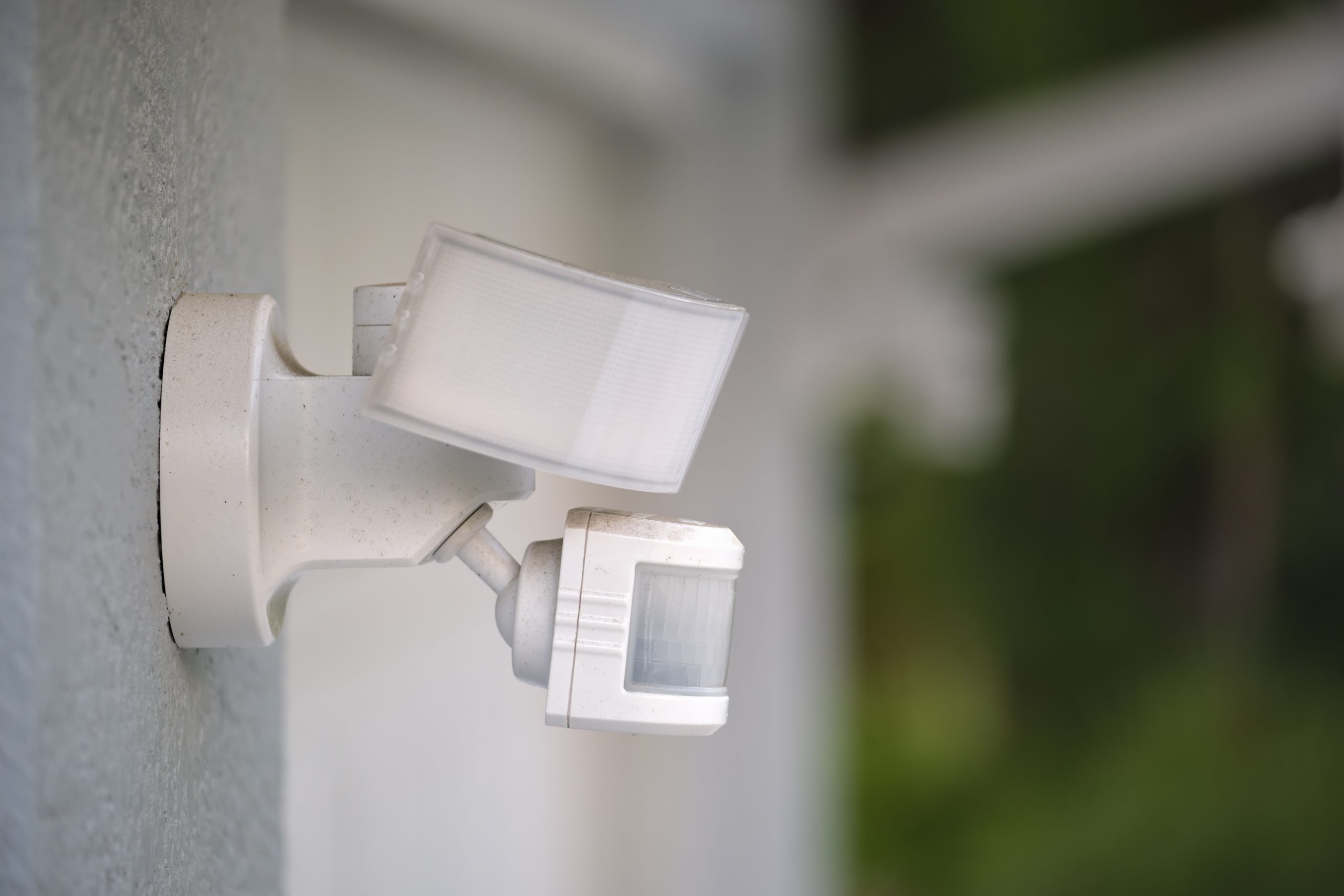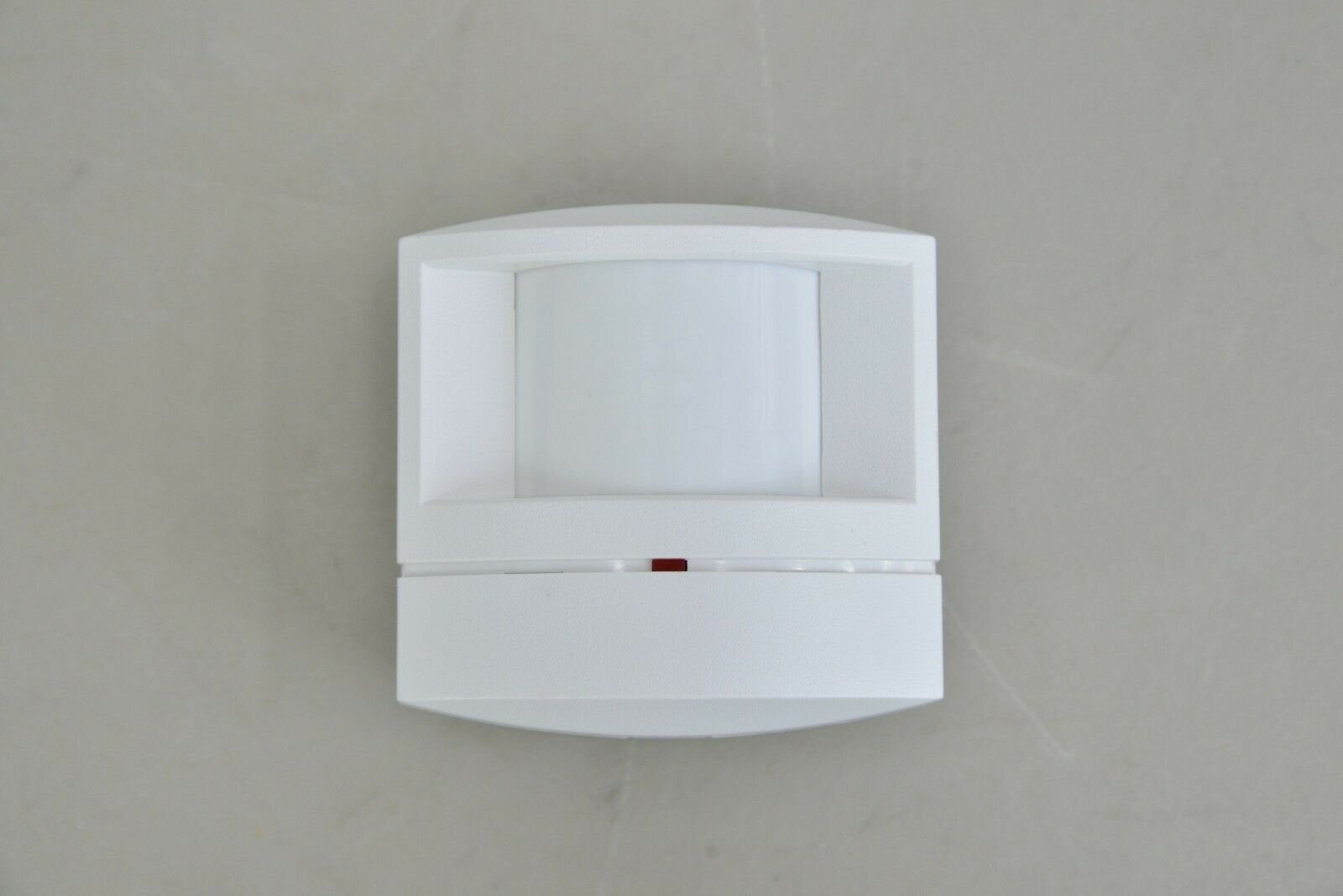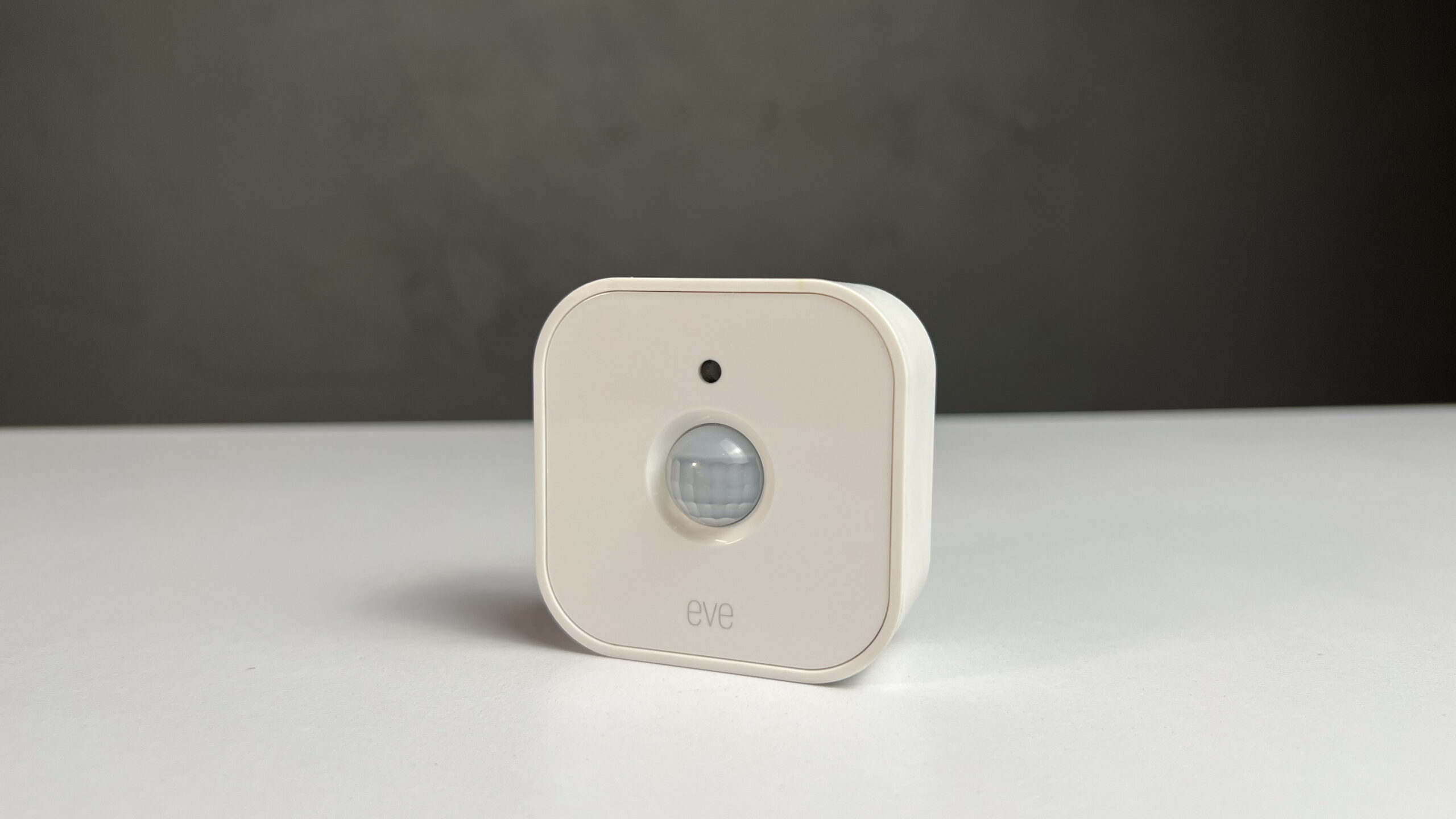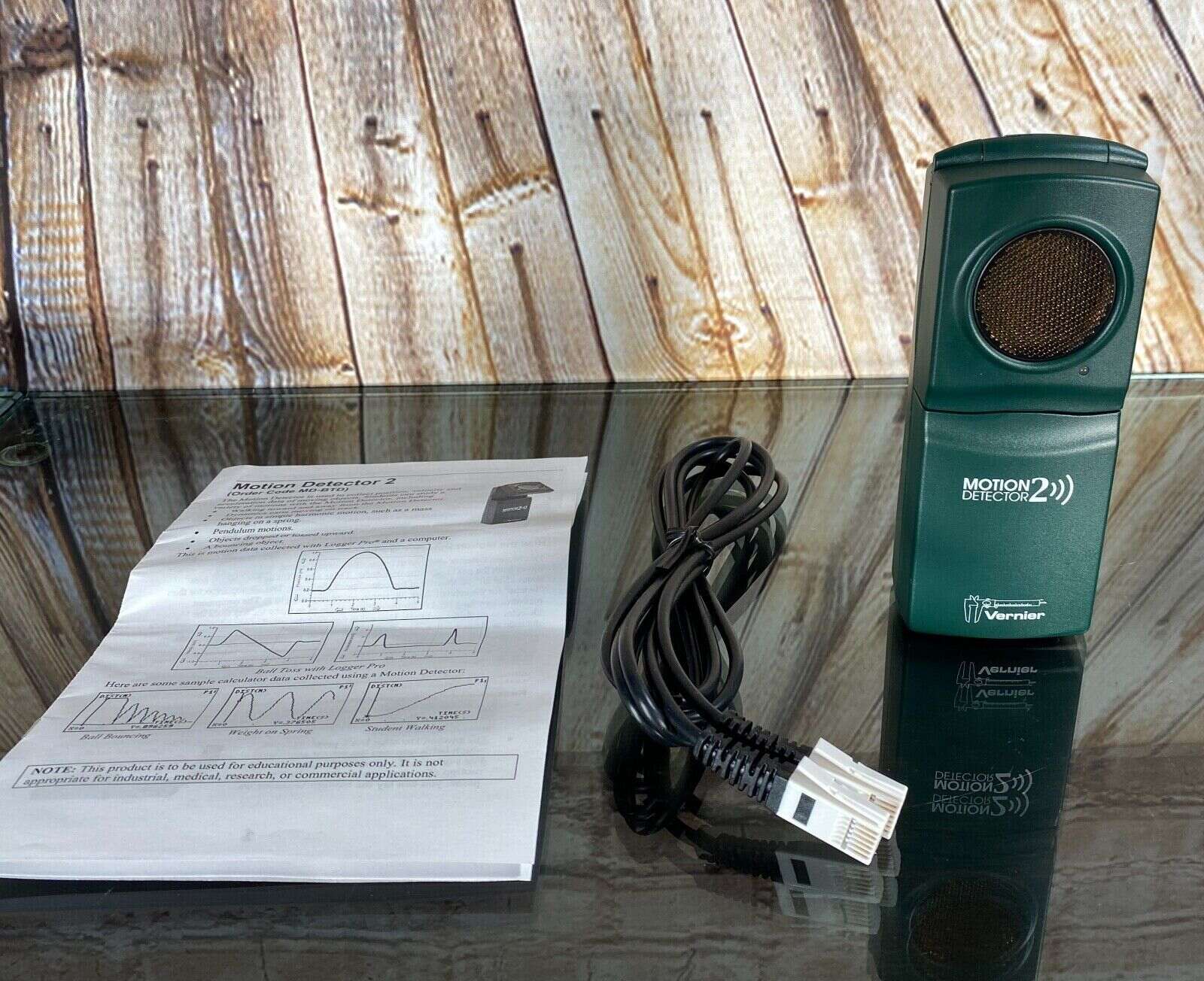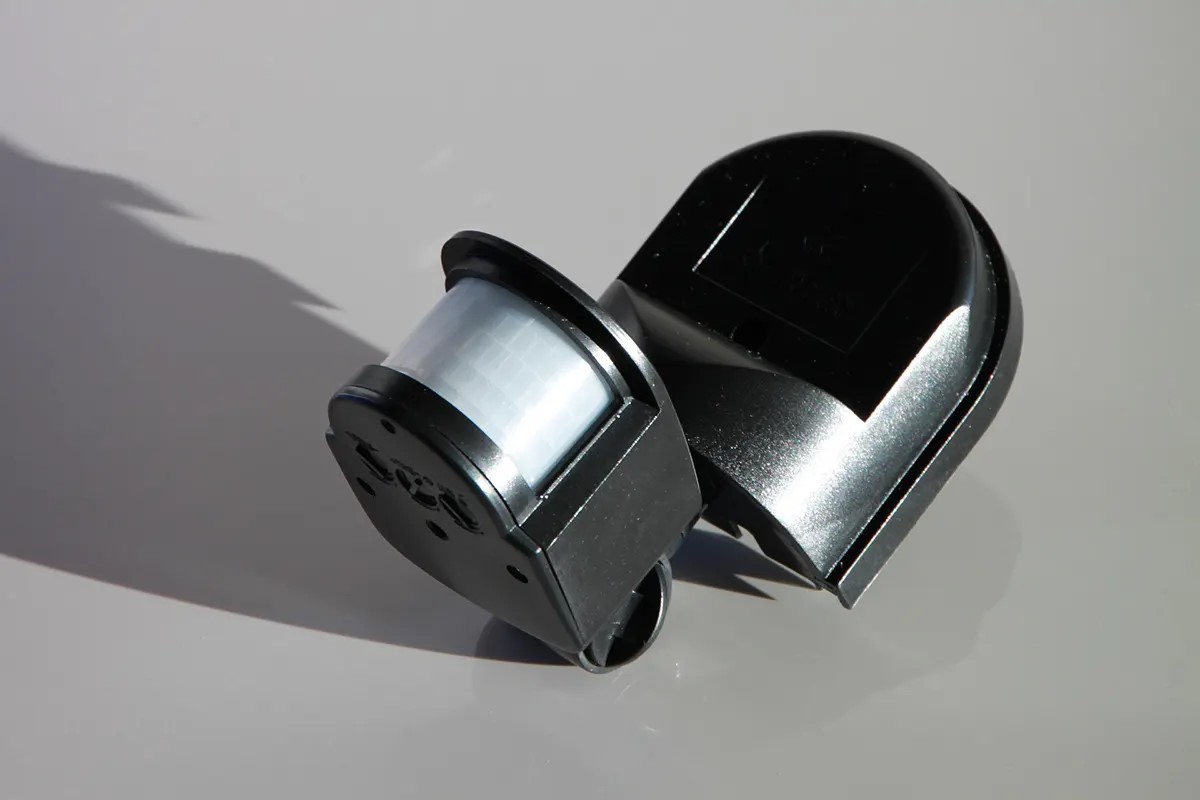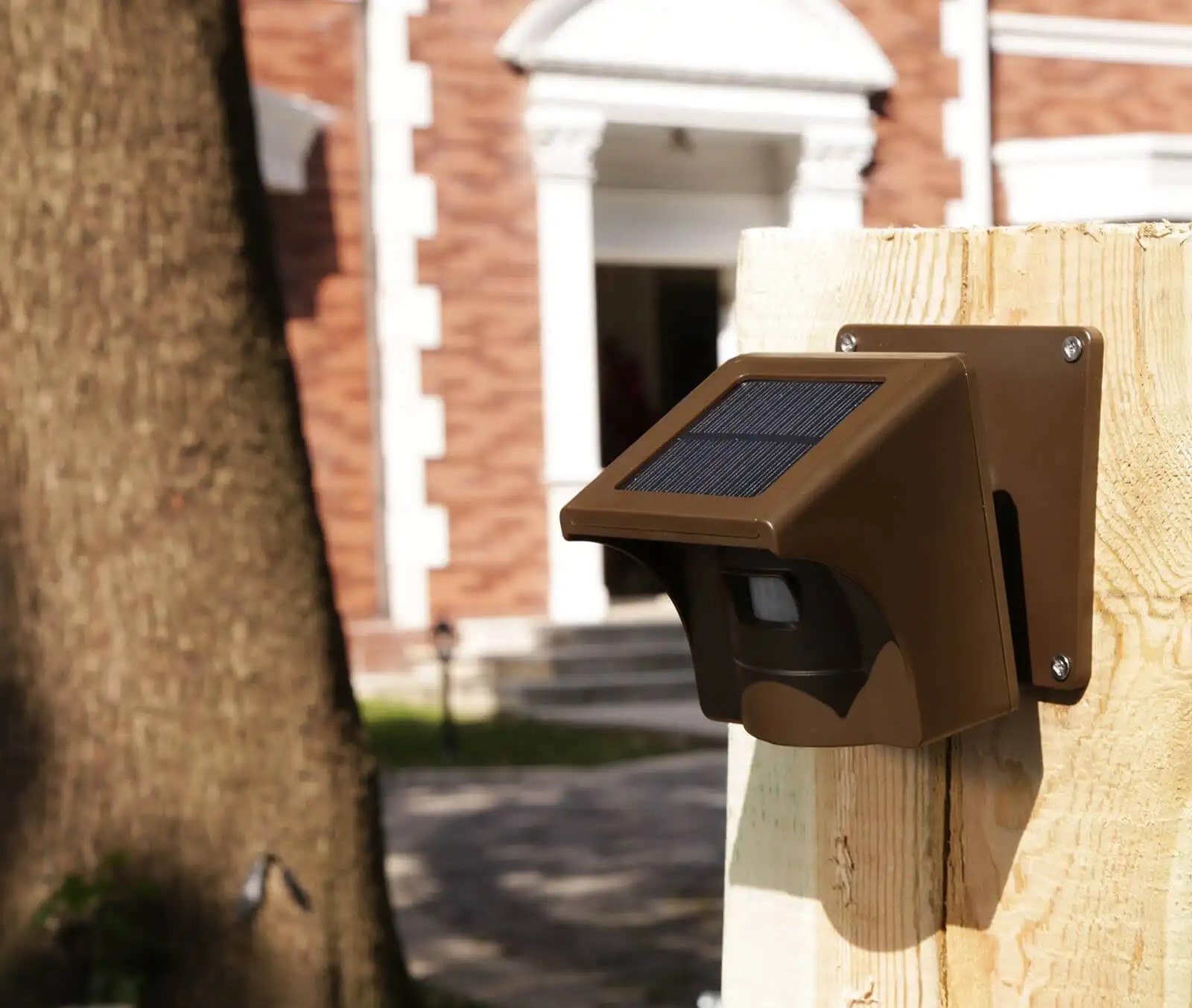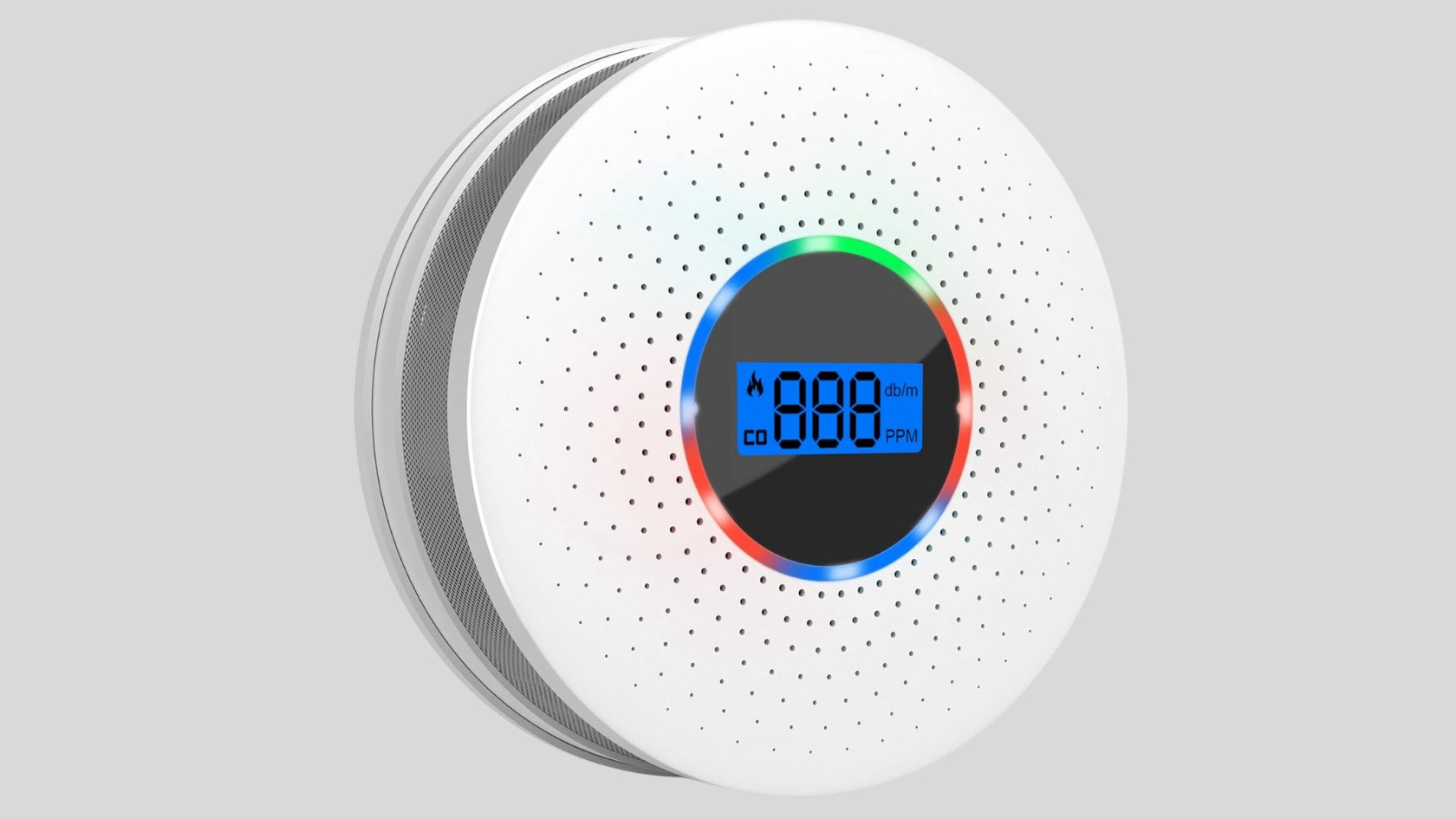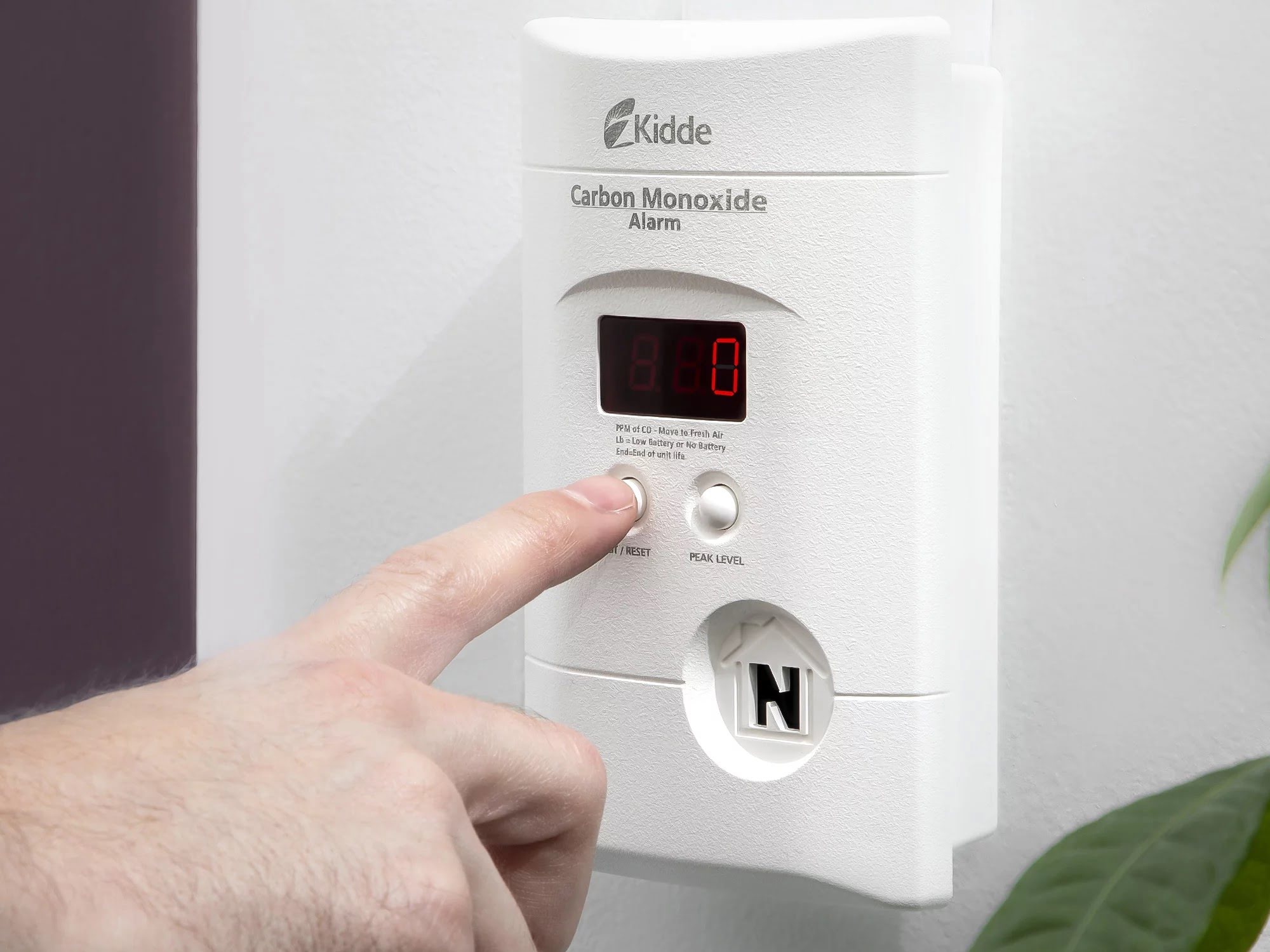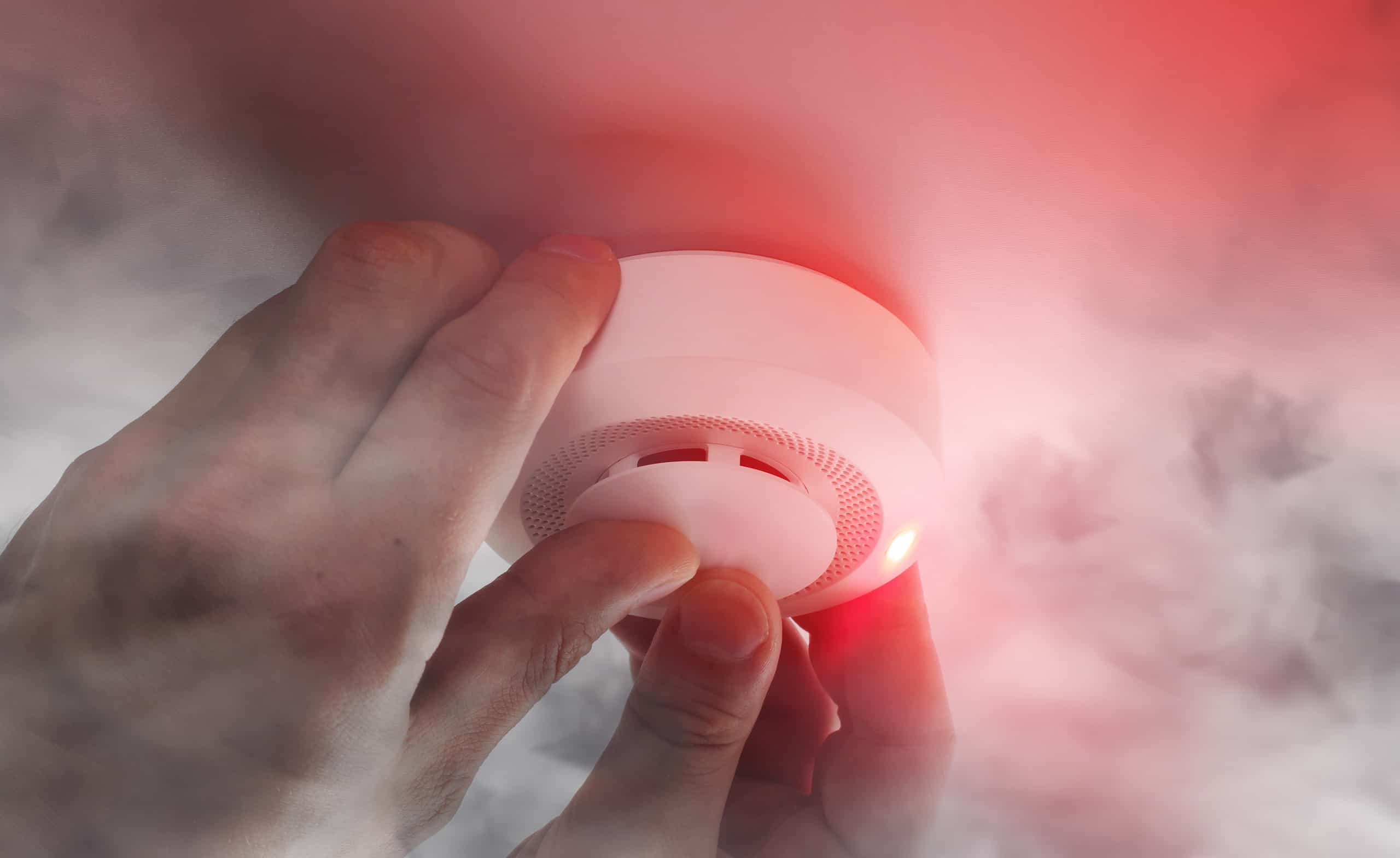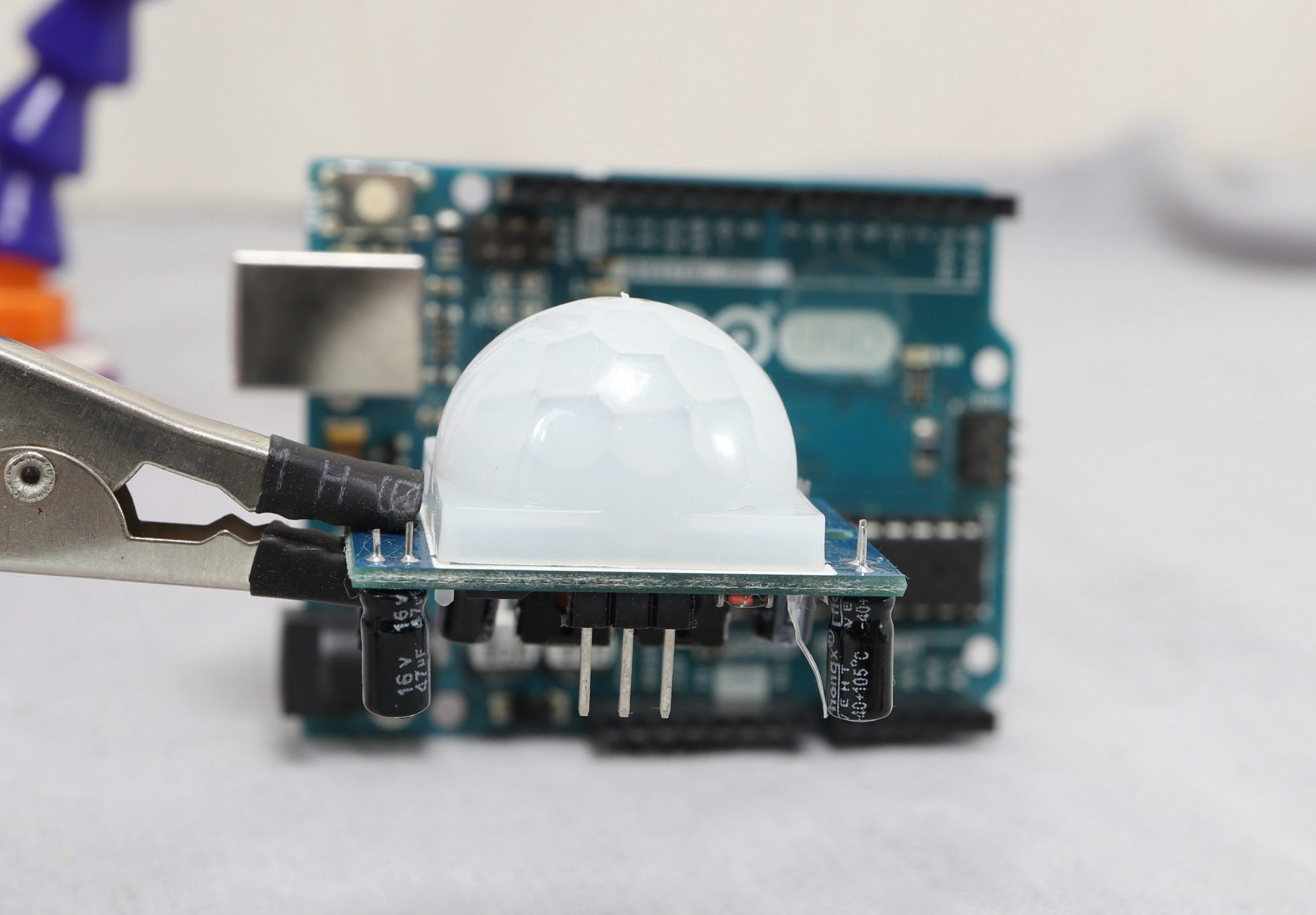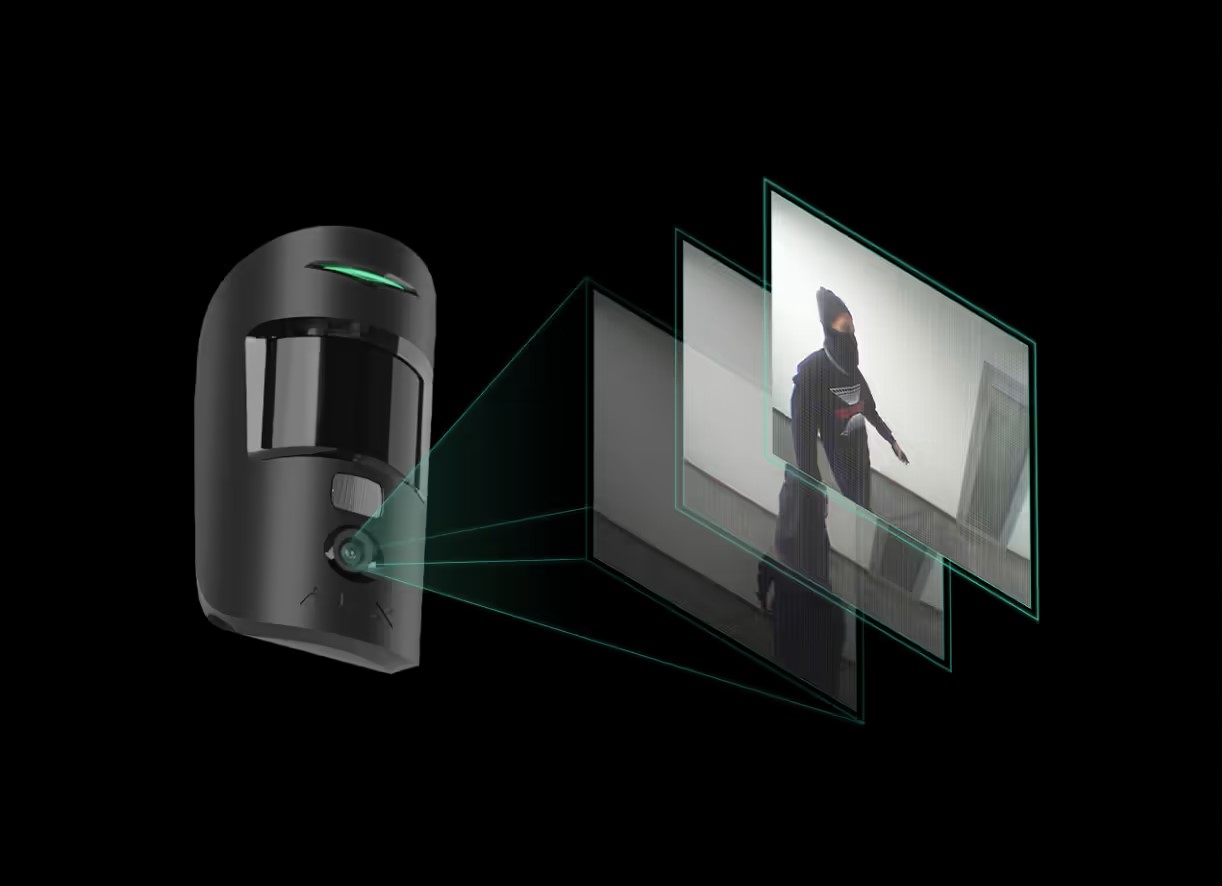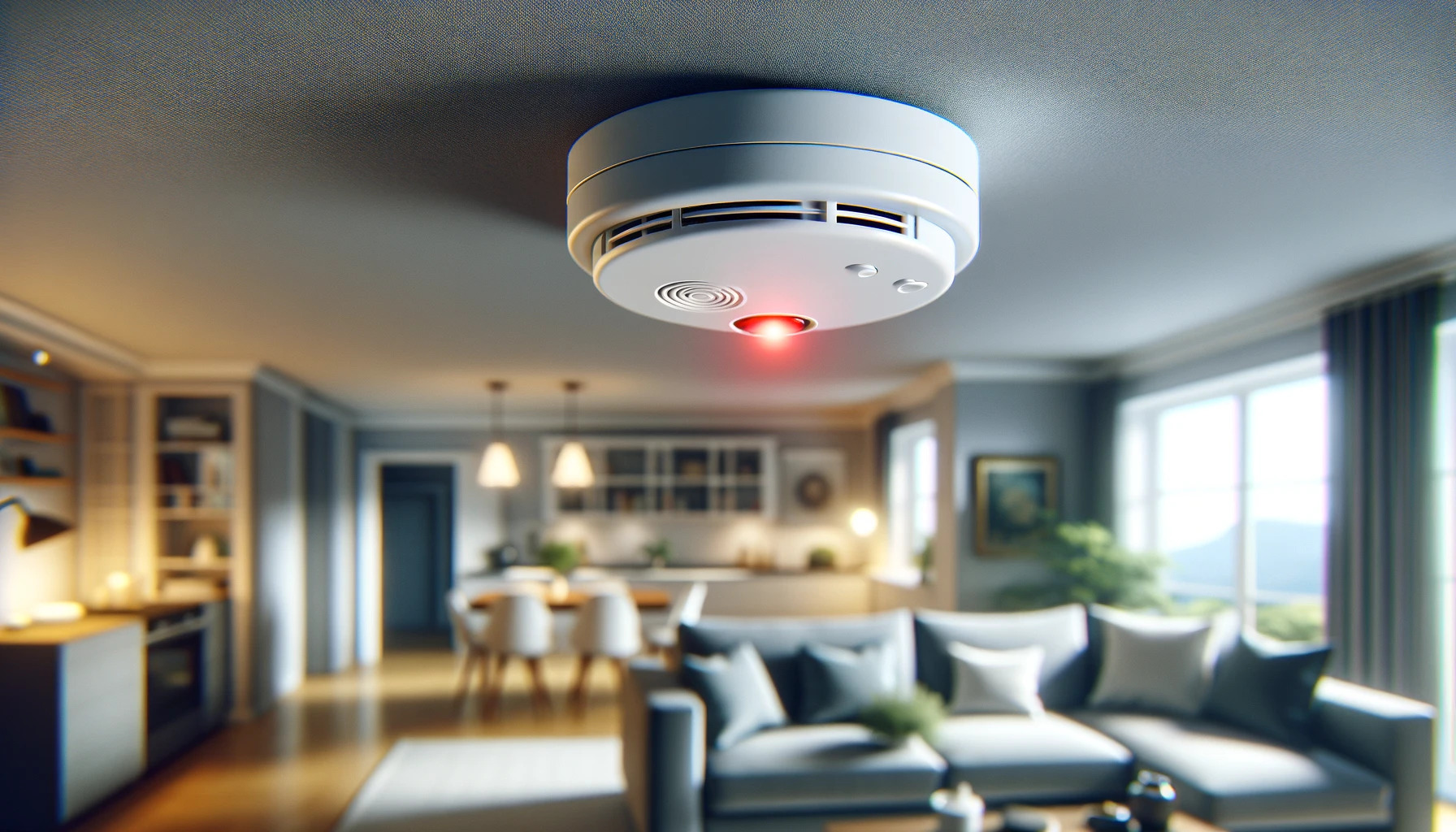Home>Home Security and Surveillance>What Does Threshold Mean In Motion Detector
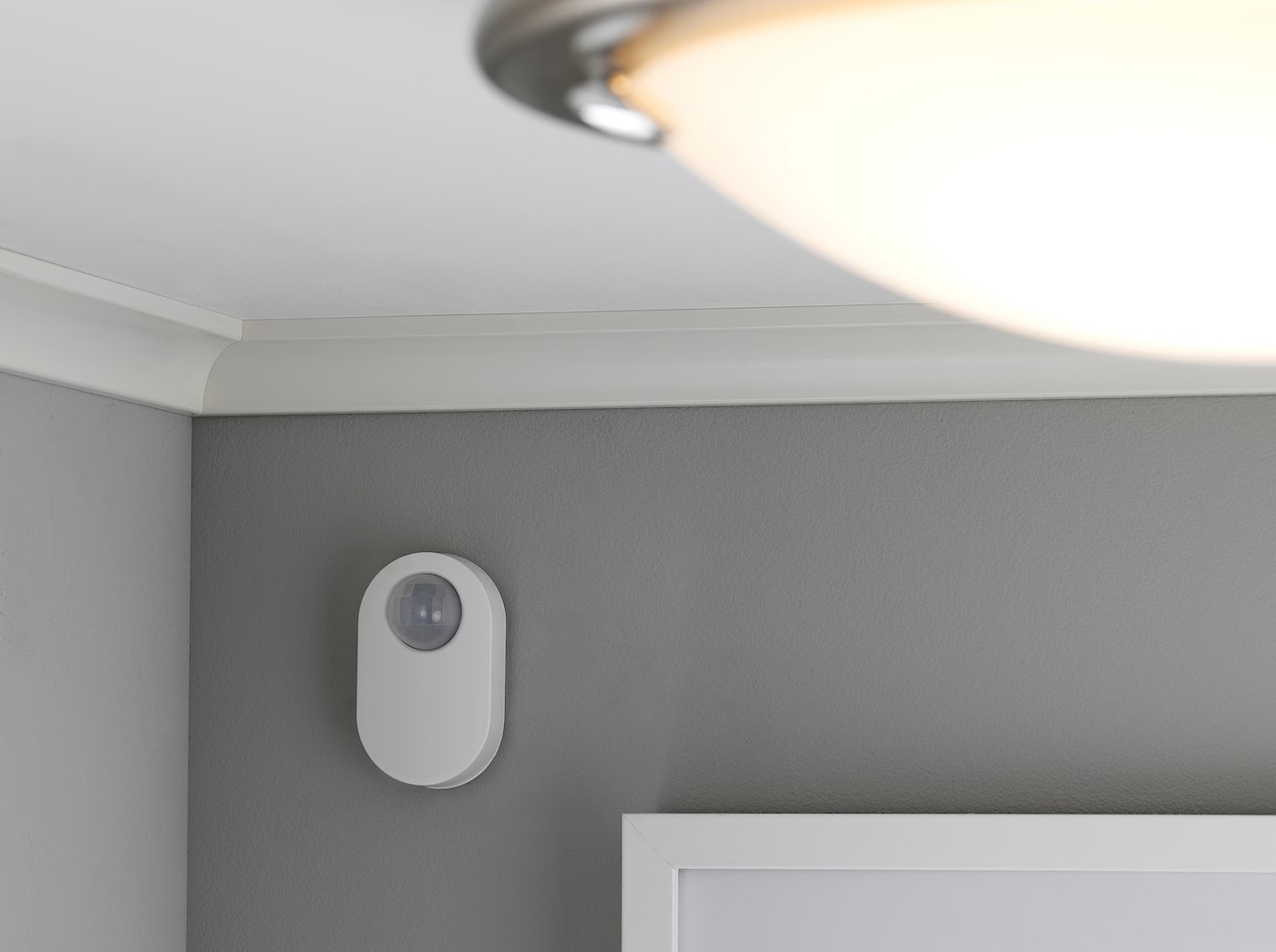

Home Security and Surveillance
What Does Threshold Mean In Motion Detector
Modified: March 6, 2024
Learn what the term "threshold" means in a motion detector and how it relates to home security and surveillance.
(Many of the links in this article redirect to a specific reviewed product. Your purchase of these products through affiliate links helps to generate commission for Storables.com, at no extra cost. Learn more)
Introduction
Welcome to the world of home security and surveillance! In a time where safety concerns are at the forefront of our minds, it’s essential to take proactive measures to protect our homes and loved ones. One of the key components of a robust home security system is a motion detector. But have you ever wondered what the term “threshold” means when it comes to motion detectors?
A motion detector is a device that is designed to detect movement within a specific area. It is commonly used in home security systems to alert homeowners of potential intruders or any suspicious activity. The threshold, in the context of motion detectors, refers to the sensitivity level at which the motion detector is triggered. Simply put, it determines how much movement is required to activate the alarm or initiate a specific action.
The purpose of setting a threshold in motion detectors is to find the optimal balance between accurately detecting genuine motions and minimizing false alarms. By adjusting the threshold, you can ensure that the motion detector responds appropriately to actual threats while ignoring insignificant movements, such as pets or tree branches swaying in the wind.
Setting the threshold in a motion detector involves determining the minimum amount of movement required to activate the sensor. When the sensor detects movement that exceeds this threshold, it triggers an alert or activates a connected device, such as turning on lights or recording video footage.
Several factors influence the threshold setting in motion detectors. These include the specific environment in which the detector is installed, the type of motion detector technology being used, and the desired level of sensitivity. For example, in outdoor settings with frequent movement, a higher threshold may be set to reduce false alarms caused by animals or passing vehicles.
The threshold setting in motion detectors plays a crucial role in the overall effectiveness of the security system. It allows for customization and fine-tuning to ensure a balance between reliable detection and minimizing false alarms. By finding the ideal threshold, you can trust that your motion detector will accurately respond to potential threats, providing you with peace of mind.
Let’s explore some common applications where motion detectors with adjustable thresholds are particularly useful.
Key Takeaways:
- Motion detectors with adjustable thresholds help keep homes safe by accurately detecting significant movements while minimizing false alarms, enhancing security response, and conserving battery power.
- By setting the threshold at an appropriate level, homeowners can trust that their motion detectors will respond accurately to potential threats while minimizing false alarms, providing peace of mind and maintaining a safe and secure environment.
Read more: What Does NC And C Mean In Motion Detector?
Definition of a Motion Detector
A motion detector, also known as a motion sensor or motion-activated sensor, is an electronic device designed to detect movement within a specific area. It is an essential component of home security systems and is commonly used to deter and detect intruders.
The primary function of a motion detector is to sense changes in the infrared energy or radio waves within its range and convert them into electrical signals. These signals are then processed by the detector, which triggers an alarm or activates other security measures.
There are several types of motion detectors available, each utilizing different technologies to detect motion. Some common types include passive infrared (PIR) sensors, microwave sensors, ultrasonic sensors, and dual technology sensors that combine multiple technologies.
Passive infrared (PIR) sensors are the most widely used motion detectors in residential applications. They detect changes in the infrared radiation emitted by living beings and objects. When a person or animal moves within the sensor’s range, it detects the variation in infrared heat patterns and triggers an alarm or activates other connected devices.
Microwave sensors emit continuous microwave signals and detect changes in the frequency or phase patterns caused by moving objects. These sensors are effective at detecting motion through walls and obstacles, making them suitable for outdoor security applications.
Ultrasonic sensors use sound waves to detect movement. They emit high-frequency sound waves and measure the time it takes for the waves to bounce back after hitting objects in the environment. When the sensor detects a change in the reflected waves, it indicates motion and triggers the desired response.
Dual technology sensors combine two different technologies, such as PIR and microwave, to enhance accuracy and reduce false alarms. By requiring both technologies to detect motion before triggering an alarm, dual technology sensors provide a higher level of reliability compared to single-technology sensors.
Motion detectors are typically installed in strategic locations throughout a property, such as entry points, hallways, or near valuables. When armed, they continuously monitor the surrounding area for any movement. Once triggered, they can activate alarms, send notifications to homeowners, or initiate other security measures, such as turning on lights or recording video footage.
In addition to their use in home security systems, motion detectors have various other applications. They are commonly found in automatic lighting systems, energy-saving systems, and even in gaming consoles and interactive devices.
Now that we understand the definition and purpose of motion detectors, let’s delve deeper into the concept of thresholds and their significance in these devices.
Purpose of a Threshold in Motion Detectors
The threshold in a motion detector serves a crucial purpose in ensuring accurate detection of movement while minimizing false alarms. By setting a threshold, you can control the sensitivity level of the motion detector, determining the amount of movement required to trigger an alarm or initiate a specific action.
The primary purpose of a threshold is to differentiate between significant movements that may indicate a potential threat and minor movements that are not of concern. Without a threshold, even a slight change, such as a passing insect or a falling leaf, could trigger false alarms, leading to inconvenience and frustration.
By setting an appropriate threshold, you can reduce false alarms caused by common occurrences, such as pets moving around or plants swaying in the wind. This ensures that the motion detector focuses on detecting actual threats, improving the overall effectiveness of the security system.
Furthermore, the threshold allows you to customize the motion detector’s sensitivity based on your specific needs and the area being monitored. In high-traffic areas, such as hallways or entryways, you may want to set a lower threshold to ensure that even slight movements are detected. On the other hand, in areas with frequent movements, such as near windows or in outdoor spaces, a higher threshold can help filter out false alarms caused by non-threatening factors.
Another important purpose of the threshold is to optimize battery life and reduce power consumption. Motion detectors are typically powered by batteries, and constantly monitoring for movement can drain the battery quickly. By setting a threshold, the motion detector can conserve power by only activating when the movement exceeds the specified threshold, prolonging the battery life and reducing maintenance requirements.
The threshold in motion detectors provides a level of customization and adaptability to suit the specific needs of different environments and security requirements. It allows homeowners to strike a balance between reliable detection and minimizing false alarms, ensuring that the motion detector operates efficiently and effectively.
Now that we understand the purpose of the threshold in motion detectors, let’s explore how this threshold is set in these devices.
How a Threshold is Set in Motion Detectors
Setting the threshold in a motion detector involves determining the minimum amount of movement required to trigger an alarm or initiate a specific action. This threshold can be adjusted to customize the sensitivity level of the motion detector based on the specific environment and security needs.
Most modern motion detectors provide a way to set the threshold through a control panel or a configuration interface. The exact method may vary depending on the specific model and manufacturer, but here are some general steps involved in setting the threshold:
- Access the settings: Start by accessing the motion detector’s settings. This can usually be done through a control panel, a smartphone app, or by directly accessing the motion detector unit.
- Locate the threshold setting: Look for the specific setting related to the threshold or sensitivity level. It may be labeled as “threshold,” “sensitivity,” or something similar.
- Adjust the threshold level: Once you have located the threshold setting, you can adjust the sensitivity level according to your preferences. Some motion detectors offer a slider or a numerical scale to adjust the threshold, while others may provide specific options, such as low, medium, and high.
- Test and fine-tune: After making adjustments to the threshold, it is essential to test the motion detector in its environment. Walk through the monitored area and observe the device’s response. If there are frequent false alarms, consider increasing the threshold to reduce sensitivity. If the detector fails to detect desired movements, consider lowering the threshold for increased sensitivity.
- Repeat adjustments if needed: Fine-tuning the threshold may require some trial and error. It is important to repeat the process of adjusting and testing until you find the optimal setting that strikes the right balance between reliable detection and minimizing false alarms.
Some advanced motion detectors may offer additional features, such as adaptive threshold settings or intelligent algorithms that automatically adjust the threshold based on patterns and historical data. These features can help optimize the motion detection system over time and further improve its accuracy.
It is worth noting that the threshold setting may differ depending on the type of motion detector technology being used. For example, a passive infrared (PIR) sensor may have a different threshold adjustment mechanism compared to a microwave sensor or an ultrasonic sensor. Therefore, it is important to consult the user manual or the manufacturer’s instructions specific to your motion detector model.
Now that we understand how a threshold is set in motion detectors, let’s explore the factors that can affect the threshold setting.
Factors that Affect the Threshold Setting
Several factors can influence the threshold setting in motion detectors. Understanding these factors is crucial to ensure the motion detector operates effectively and minimizes false alarms. Here are some key factors that can affect the threshold setting:
- Environment: The specific environment in which the motion detector is installed plays a significant role in determining the optimal threshold setting. Different environments have varying levels of background movement. For example, an outdoor motion detector near a busy street may require a higher threshold to filter out the constant flow of vehicles, while an indoor motion detector in a quiet hallway may need a lower threshold to detect even subtle movements.
- Type of motion detector technology: Different types of motion detector technologies have varying levels of sensitivity and methods of detecting movement. For example, passive infrared (PIR) sensors are more sensitive to changes in infrared radiation, while microwave sensors are better at detecting movement through walls and obstacles. The threshold setting may need to be adjusted accordingly based on the specific technology being used.
- Desired level of sensitivity: The desired level of sensitivity can also impact the threshold setting. This can vary depending on the security requirements and personal preferences. Some individuals may opt for a higher sensitivity setting to ensure maximum detection and responsiveness, while others may prefer a lower sensitivity to minimize false alarms.
- Distance and coverage area: The distance and coverage area of the motion detector can also affect the threshold setting. A motion detector with a broader coverage area may require a higher threshold to filter out unwanted movements outside the intended monitoring zone.
- Time of day: The time of day can influence the threshold setting, especially for outdoor motion detectors. Ambient lighting conditions, such as bright sunlight during the day or limited visibility at night, can impact the detection and sensitivity levels. Some motion detectors have built-in light sensors that adjust the threshold automatically based on the surrounding illumination.
- Obstacles and interference: Obstacles or sources of interference within the detection range can affect the threshold setting. For example, objects like moving fans or curtains may generate false readings, requiring adjustments to the threshold. It is important to consider any potential sources of interference and fine-tune the threshold accordingly.
It is worth noting that finding the optimal threshold setting often requires some experimentation and adjustment. It is recommended to start with a conservative threshold and gradually make small changes based on observation and feedback from the motion detector’s performance. Regular testing and monitoring can help fine-tune the threshold setting to achieve the desired balance between accurate detection and minimizing false alarms.
Now that we understand the factors that affect the threshold setting, let’s explore the importance of the threshold in motion detectors.
Importance of the Threshold in Motion Detectors
The threshold setting in motion detectors plays a crucial role in ensuring the overall effectiveness of the security system. It enables accurate detection of genuine movements while minimizing false alarms. Here are some key reasons why the threshold in motion detectors is important:
- Reducing false alarms: False alarms can be a significant inconvenience and can lead to complacency or disregarding genuine alarms. By setting an appropriate threshold, the motion detector can filter out minor movements that are not of concern, such as pets or foliage swaying in the wind. This helps to significantly reduce false alarms, ensuring that the motion detector responds only to significant and potentially threatening movements.
- Customization and adaptability: The threshold allows for customization and fine-tuning to suit the specific environment and security needs. Homeowners can adjust the threshold to find the optimal sensitivity level based on factors such as the location of the motion detector, the expected types of movements, and the desired level of responsiveness. This customization ensures that the motion detector is tailored to the specific requirements of each situation.
- Battery conservation: Motion detectors are typically powered by batteries, and setting an appropriate threshold can help conserve power and prolong battery life. By activating the motion detector only when the movement exceeds a specified threshold, unnecessary power consumption is minimized. This not only reduces the frequency of battery replacement but also contributes to eco-friendly and sustainable energy usage.
- Enhancing security response: A well-calibrated threshold ensures that the motion detector responds promptly and effectively to genuine threats. By accurately detecting significant movements, the motion detector can trigger alarms, send notifications, or activate other security measures, such as turning on lights or recording video footage. This swift response enhances the overall security response, allowing homeowners to take immediate action when necessary.
- Optimizing performance: The threshold setting plays a crucial role in optimizing the performance of the motion detector. By finding the right balance between sensitivity and minimizing false alarms, the motion detector operates at its peak efficiency. This ensures that the device effectively detects potential threats, providing reliable and consistent security monitoring.
Overall, the threshold in motion detectors is vital for achieving an optimal balance between reliable detection and minimizing false alarms. It allows for customization, adaptability, and battery conservation while enhancing the security response. By setting and fine-tuning the threshold, homeowners can trust that their motion detector will effectively detect and respond to genuine threats, providing them with a sense of security and peace of mind.
Now that we understand the importance of the threshold, let’s explore some common applications where motion detectors with adjustable thresholds are particularly useful.
When setting the threshold on a motion detector, make sure to adjust it to the level of motion sensitivity you need. A lower threshold will detect smaller movements, while a higher threshold will only pick up larger movements.
Common Applications of Motion Detectors with Thresholds
Motion detectors with adjustable thresholds are versatile devices that find application in various settings. Their ability to accurately detect movement while reducing false alarms makes them valuable in different scenarios. Here are some common applications where motion detectors with thresholds are particularly useful:
- Home security systems: Motion detectors are a key component of home security systems, providing an additional layer of protection for the property and its occupants. By setting the threshold appropriately, motion detectors can detect unauthorized entry, intrusions, or suspicious activities. They can trigger alarms, send notifications to homeowners, and even activate other security measures like lighting or video surveillance.
- Outdoor perimeter security: Motion detectors are often employed to secure the outdoor perimeter of residential and commercial properties. By setting a higher threshold, these detectors can filter out movements caused by animals, vegetation, or passing vehicles, minimizing false alarms. This ensures that only significant movements, such as unauthorized entry attempts, trigger the security system.
- Indoor motion-activated lighting: Motion detectors with adjustable thresholds are also commonly used in indoor lighting systems. By setting a lower threshold, the motion detector can recognize even subtle movements, automatically turning on lights when someone enters a room. This not only provides convenience but also contributes to energy savings by ensuring that lights are only activated when needed.
- Automatic doors and access control: Motion detectors play a crucial role in automatic doors and access control systems. By setting a specific threshold, the motion detector can detect a person’s approach and trigger the opening of the door or activation of the access control mechanism. This improves convenience, especially in high-traffic areas, while maintaining security by only responding to significant movements.
- Safety lighting in stairways and hallways: Motion detectors with adjustable thresholds are often utilized to provide safety lighting in stairways, hallways, and other areas where visibility may be limited. By setting a lower threshold, the motion detector can detect movements, ensuring that the lights are automatically turned on to illuminate the path for safe navigation.
- Energy-saving systems: Motion detectors contribute to energy-saving initiatives by ensuring that lights or electronic devices are activated only when needed. By setting an appropriate threshold, motion detectors can control the operation of lighting, HVAC systems, and other appliances, minimizing energy wastage and reducing utility costs.
- Commercial and industrial security: Motion detectors with customizable thresholds find extensive application in commercial and industrial security systems. They are employed in warehouses, manufacturing facilities, and office buildings to monitor for unauthorized access or intrusions. By setting the threshold according to the specific requirements of the environment, these motion detectors enhance the overall security of the premises.
- Smart home automation: Motion detectors with adjustable thresholds are often integrated into smart home automation systems. They can trigger various actions, such as adjusting temperature settings, playing music, or activating home appliances, based on the presence or absence of movement. The threshold setting allows homeowners to customize the automation to their preferences and lifestyle.
These are just a few examples of the diverse applications where motion detectors with adjustable thresholds are employed. Their versatility and reliability make them an integral part of security, convenience, and energy-saving systems in residential, commercial, and industrial environments.
Now that we’ve explored the common applications of motion detectors with thresholds, let’s discuss the advantages and limitations of using a threshold in motion detectors.
Advantages and Limitations of Using a Threshold in Motion Detectors
Using a threshold in motion detectors offers several advantages, but it also comes with a few limitations. Understanding these can help determine the optimal use and effectiveness of motion detectors in various applications. Let’s explore the advantages and limitations of using a threshold:
Advantages:
- Reduced false alarms: One of the significant advantages of using a threshold in motion detectors is the reduction of false alarms. By setting an appropriate threshold, the motion detector can filter out insignificant movements, such as pets, small insects, or environmental changes, minimizing false alarms and ensuring that the device responds only to relevant and potential threats.
- Customizable sensitivity: The threshold allows for customization and adaptability. It enables homeowners to adjust the motion detector’s sensitivity based on the specific environment and security needs. By setting the threshold to the desired level, you can find the optimal balance between accurate detection and minimizing false alarms, ensuring the motion detector is tailored to your requirements.
- Battery conservation: Setting an appropriate threshold helps conserve battery power and prolong the battery life of motion detectors. By activating the device only when the movement exceeds the specified threshold, unnecessary power consumption is minimized. This not only reduces maintenance requirements but also contributes to eco-friendly and sustainable energy usage.
- Enhanced security response: Motion detectors with adjustable thresholds provide a more effective security response. By accurately detecting significant movements, they ensure timely and appropriate actions, such as triggering alarms, sending notifications, or activating other security measures. This swift and reliable response enhances the overall security of the premises.
Limitations:
- Potential for missed detections: While setting a threshold helps reduce false alarms, it also poses the risk of missed detections. If the threshold is set too high, the motion detector may fail to detect subtle or low-intensity movements that may still be of interest. It is essential to find the right balance and regularly test the motion detector’s performance to ensure it captures all relevant movements.
- Varied effectiveness in different environments: The effectiveness of a threshold in motion detectors may vary depending on the specific environment. Factors such as ambient lighting, background movements, and the presence of obstacles can impact the performance of the motion detector. Regular monitoring and fine-tuning of the threshold setting may be required to optimize its effectiveness in different environments.
- Human intervention: Motion detectors with adjustable thresholds rely on human intervention for initial setup and ongoing maintenance. Regular testing, monitoring, and adjustment may be required to ensure the motion detector’s optimal performance. This level of involvement may be seen as a limitation for users who prefer a more hands-off approach to their security systems.
- Dependency on technology: Motion detectors are reliant on technological components and may be subject to malfunctions or interference. The threshold setting may be affected by factors such as device calibration, sensor limitations, or environmental conditions. Regular maintenance and troubleshooting may be necessary to address any issues that could impact the threshold’s effectiveness.
While there are limitations to using a threshold in motion detectors, the advantages typically outweigh them. With careful consideration, regular testing, and fine-tuning, the threshold setting can significantly enhance the effectiveness and reliability of motion detectors in providing security and peace of mind.
Now that we have explored the advantages and limitations of using a threshold in motion detectors, let’s wrap up our discussion.
Conclusion
Motion detectors with adjustable thresholds are essential components of a comprehensive home security and surveillance system. By understanding the purpose and significance of the threshold setting, homeowners can optimize the performance of their motion detectors while minimizing false alarms.
Setting the threshold in a motion detector allows for customization, adaptability, and fine-tuning. By finding the right balance between sensitivity and specificity, homeowners can ensure that their motion detectors accurately detect significant movements without being triggered by minor or irrelevant ones.
The threshold setting offers various advantages. It reduces false alarms, enhances the security response, and optimizes battery life by conserving power. With the ability to customize the threshold based on the specific environment and security requirements, motion detectors with adjustable thresholds can be tailored to suit individual needs.
However, it’s important to be aware of the limitations of using a threshold. Care must be taken to avoid missed detections, and regular testing and adjustment are necessary to optimize the threshold’s effectiveness in different environments. Additionally, human intervention and the reliance on technology may be considerations to keep in mind when utilizing motion detectors.
In conclusion, motion detectors with adjustable thresholds offer an effective means of detecting movement and enhancing home security. By setting the threshold at an appropriate level, homeowners can trust that their motion detectors will respond accurately to potential threats while minimizing false alarms. Whether used in home security systems, outdoor perimeter security, or energy-saving applications, motion detectors with thresholds play a crucial role in providing peace of mind and maintaining a safe and secure environment.
Frequently Asked Questions about What Does Threshold Mean In Motion Detector
Was this page helpful?
At Storables.com, we guarantee accurate and reliable information. Our content, validated by Expert Board Contributors, is crafted following stringent Editorial Policies. We're committed to providing you with well-researched, expert-backed insights for all your informational needs.
